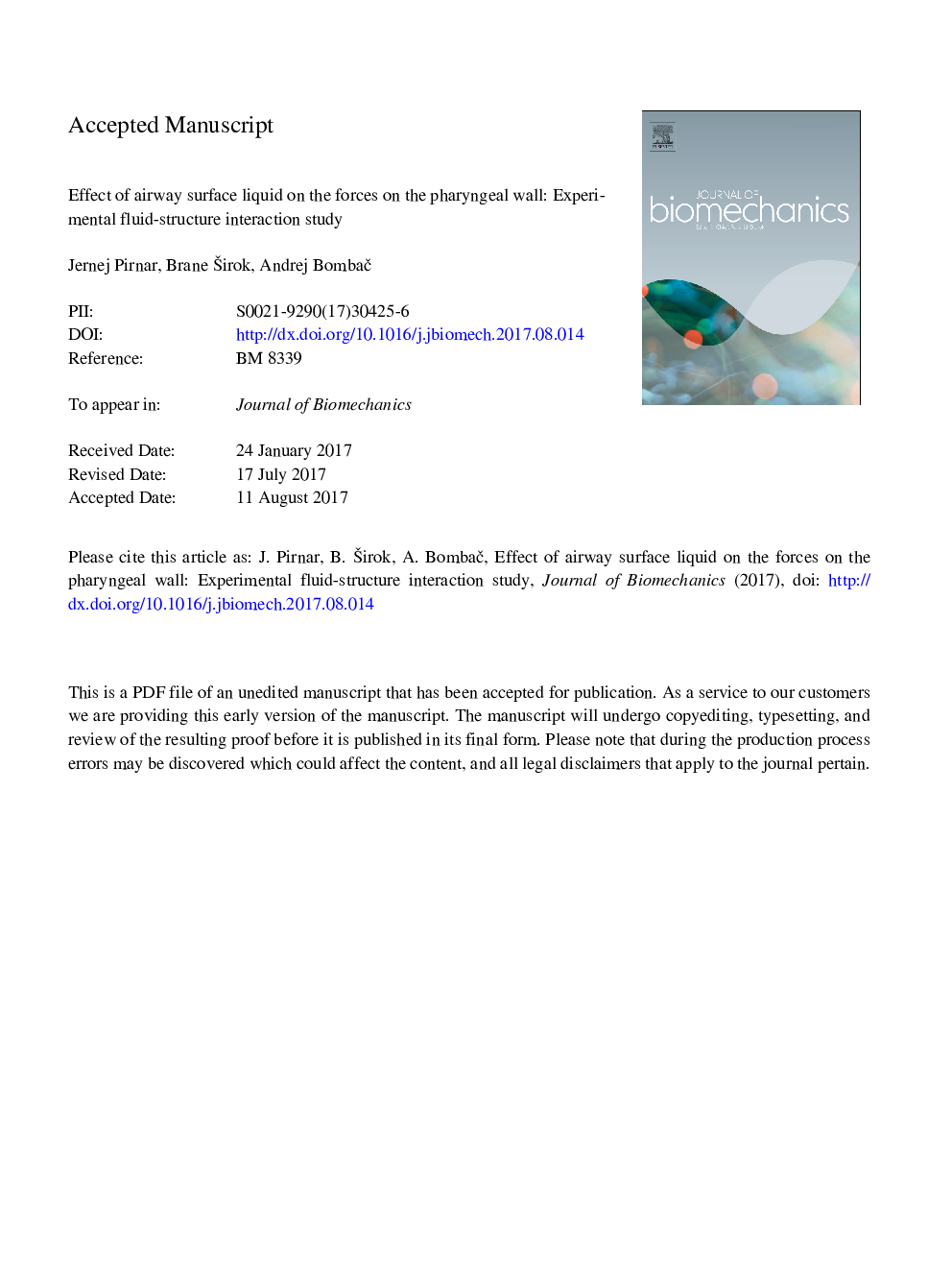| Article ID | Journal | Published Year | Pages | File Type |
|---|---|---|---|---|
| 7237160 | Journal of Biomechanics | 2017 | 32 Pages |
Abstract
Obstructive sleep apnoea syndrome (OSAS) is a breathing disorder with a multifactorial etiology. The respiratory epithelium is lined with a thin layer of airway surface liquid preventing interactions between the airflow and epithelium. The effect of the liquid lining in OSAS pathogenesis remains poorly understood despite clinical research. Previous studies have shown that the physical properties of the airway surface liquid or altered stimulation of the airway mechanoreceptors could alleviate or intensify OSAS; however, these studies do not provide a clear physical interpretation. To study the forces transmitted from the airflow to the liquid-lined compliant wall and to discuss the effects of the airway surface liquid properties on the stimulation of the mechanoreceptors, a novel and simplified experimental system mimicking the upper airway fundamental characteristics (i.e., liquid-lined compliant wall and complex unsteady airflow features) was constructed. The fluctuating force on the compliant wall was reduced through a damping mechanism when the liquid film thickness and/or the viscosity were increased. Conversely, the liquid film damping was reduced when the surface tension decreased. Based on the experimental data, empirical correlations were developed to predict the damping potential of the liquid film. In the future, this will enable us to extend the existing computational fluid-structure interaction simulations of airflow in the human upper airway by incorporating the airway surface liquid effect without adopting two-phase flow interface tracking methods. Furthermore, the experimental system developed in this study could be used to investigate the fundamental principles of the complex once/twice-coupled physical phenomena.
Keywords
Related Topics
Physical Sciences and Engineering
Engineering
Biomedical Engineering
Authors
Jernej Pirnar, Brane Å irok, Andrej BombaÄ,
